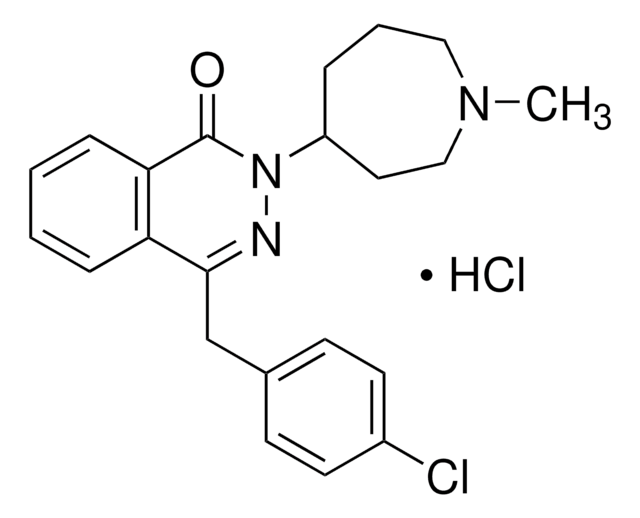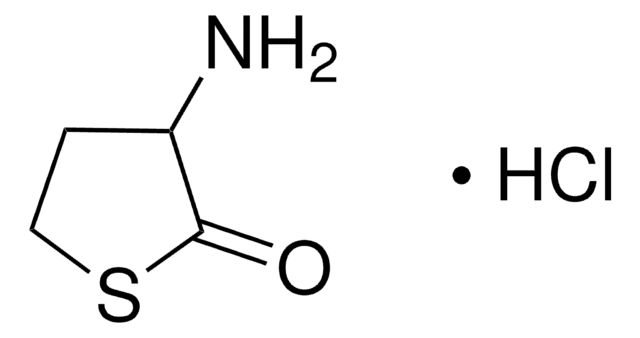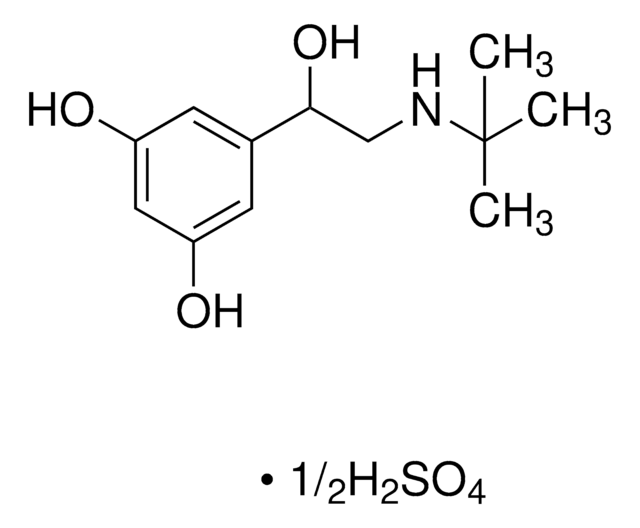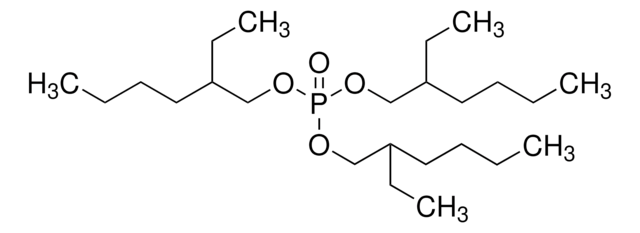A7611
Azelastine hydrochloride
≥98% (HPLC)
Synonym(s):
4-[(4-chlorophenyl)methyl]-2-(1-methylazepan-4-yl)phthalazin-1-one hydrochloride, Astelin, Optivar
About This Item
Recommended Products
Quality Level
Assay
≥98% (HPLC)
form
powder
storage condition
desiccated
color
white to off-white
solubility
DMSO: >10 mg/mL
originator
Wallace
storage temp.
−20°C
SMILES string
Cl.CN1CCCC(CC1)N2N=C(Cc3ccc(Cl)cc3)c4ccccc4C2=O
InChI
1S/C22H24ClN3O.ClH/c1-25-13-4-5-18(12-14-25)26-22(27)20-7-3-2-6-19(20)21(24-26)15-16-8-10-17(23)11-9-16;/h2-3,6-11,18H,4-5,12-15H2,1H3;1H
Looking for similar products? Visit Product Comparison Guide
1 of 4
This Item | 289922 | 87158 | 02138 |
|---|---|---|---|
| Quality Level 200 | Quality Level - | Quality Level 200 | Quality Level 200 |
| bp 215 °C/4 mmHg (lit.) | bp 215 °C/4 mmHg (lit.) | bp 289 °C (lit.) | bp 175 °C/2 mmHg (lit.) |
| form liquid | form - | form powder | form - |
| density 0.92 g/mL at 20 °C (lit.) | density 0.92 g/mL at 20 °C (lit.) | density 0.823 g/mL at 25 °C (lit.) | density 0.925 g/mL at 20 °C (lit.) |
| refractive index n20/D 1.443 | refractive index n20/D 1.444 (lit.) | refractive index - | refractive index n20/D 1.447 (lit.) |
Application
Biochem/physiol Actions
Features and Benefits
Signal Word
Warning
Hazard Statements
Precautionary Statements
Hazard Classifications
Acute Tox. 4 Oral
Storage Class Code
11 - Combustible Solids
Flash Point(F)
Not applicable
Flash Point(C)
Not applicable
Choose from one of the most recent versions:
Certificates of Analysis (COA)
Don't see the Right Version?
If you require a particular version, you can look up a specific certificate by the Lot or Batch number.
Already Own This Product?
Find documentation for the products that you have recently purchased in the Document Library.
Articles
We offers many products related to histamine receptors for your research needs.
Our team of scientists has experience in all areas of research including Life Science, Material Science, Chemical Synthesis, Chromatography, Analytical and many others.
Contact Technical Service









